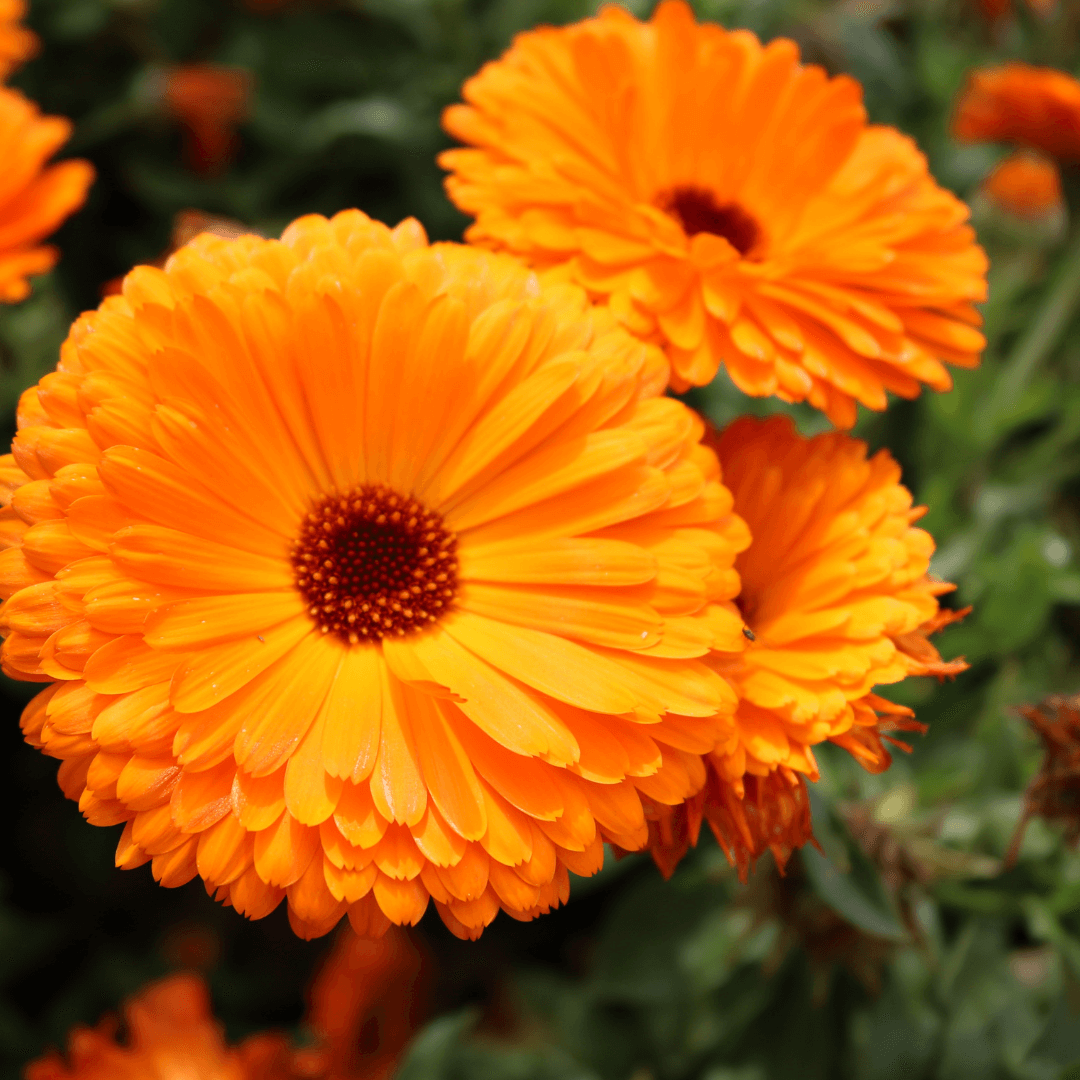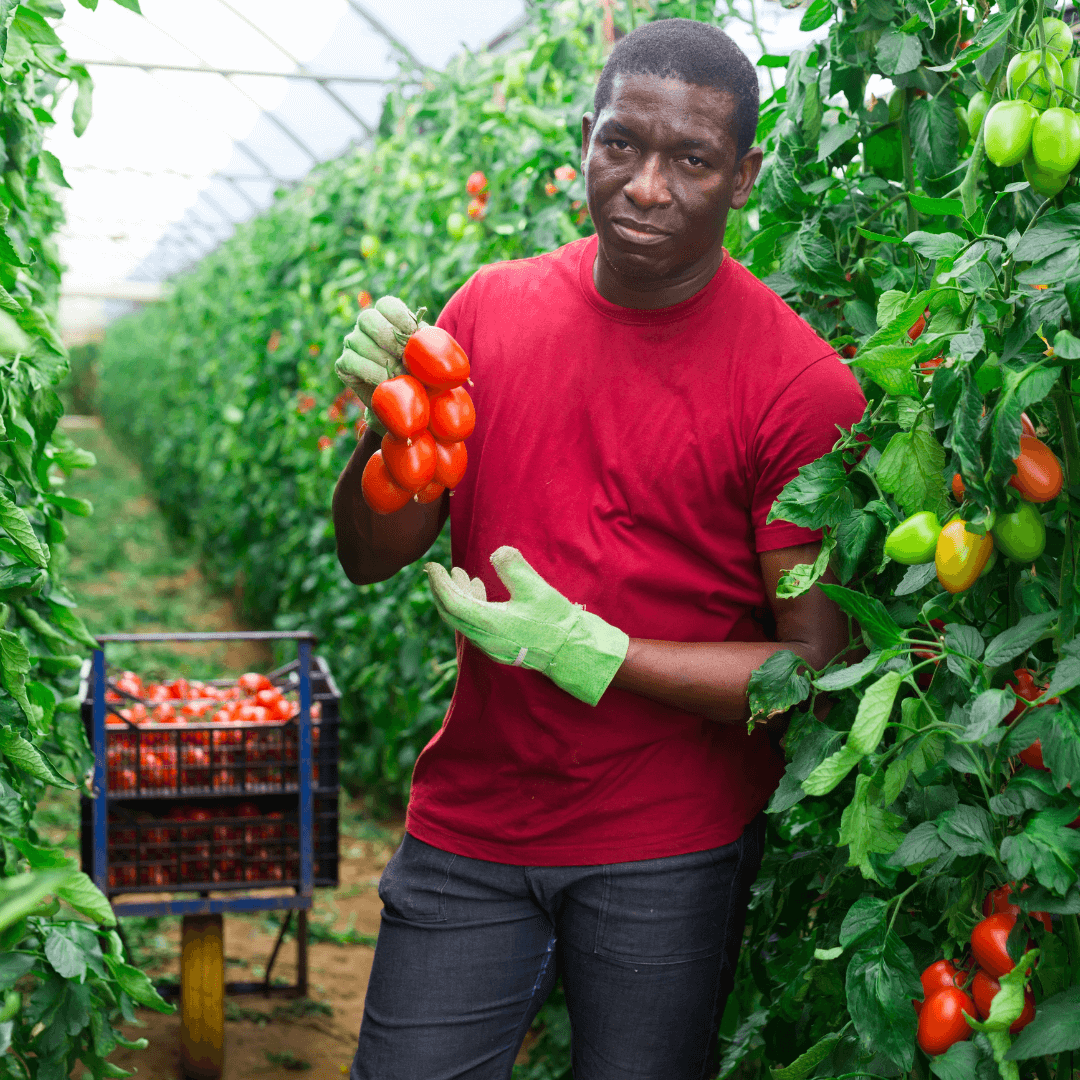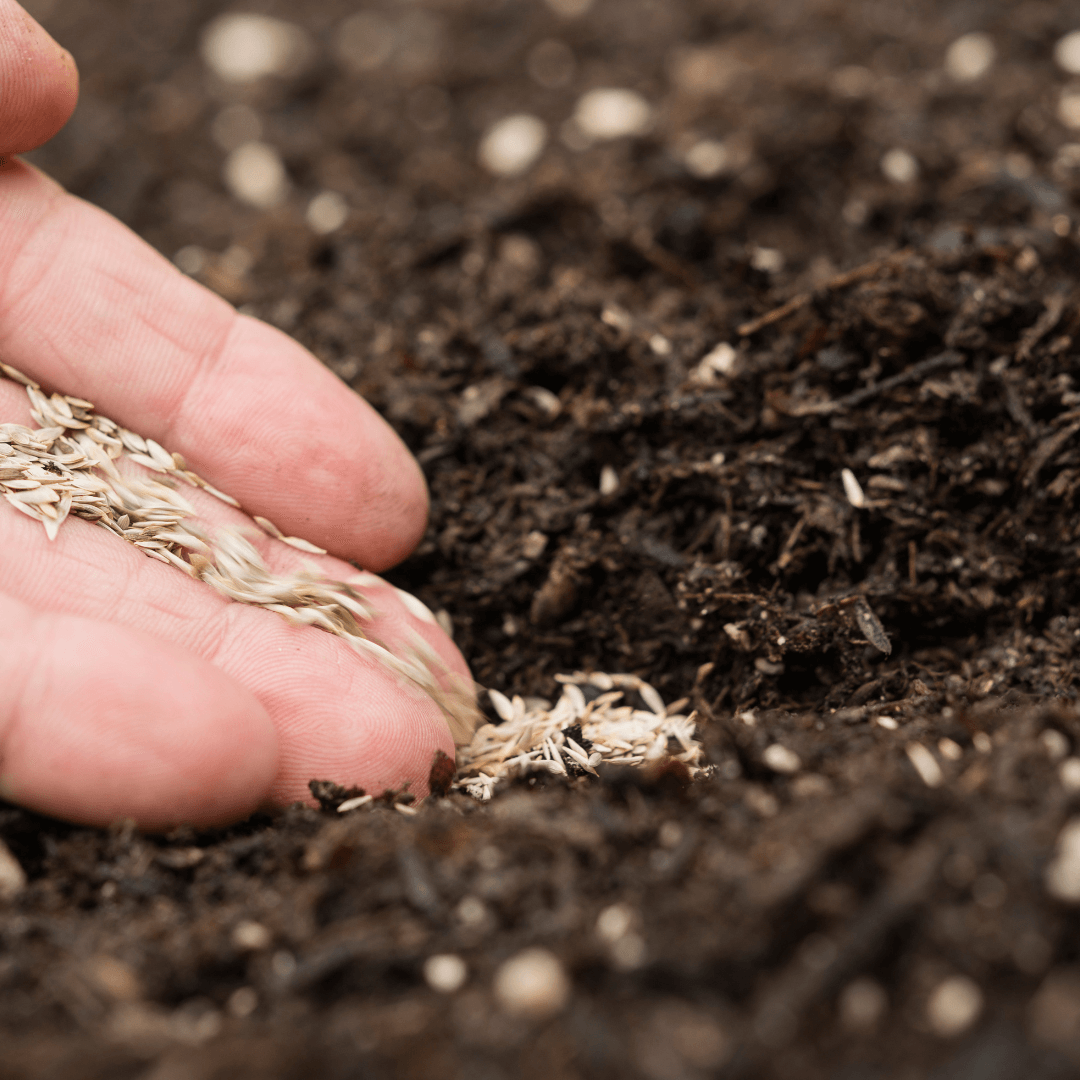Hello, fellow green thumbs! As a fellow gardener and lover of all things floral, I've got the inside scoop on how to grow your calendula plants. These vibrant orange flowers will brighten your garden and act as the perfect companion plant. You know, like the Thelma to your Louise or the Laverne to your Shirley. Follow my fun, in-depth guide, and soon you'll have a garden filled with beautiful calendula flowers that even Mother Nature would envy. Let's dive into learning how to sow calendula seeds!
1. Understanding Calendula: A Gardener's Best Friend
Calendula, also known as Calendula officinalis or pot marigold, is a versatile, easy-to-grow plant. With its vibrant orange flowers, it's not just a pretty face; calendula is also known for its numerous health benefits. The calendula petals are edible; you can use them in various recipes or to make soothing skincare products. Plus, these flowers attract pollinators, which will benefit your whole garden.
Calendula Ball’s Orange Seeds
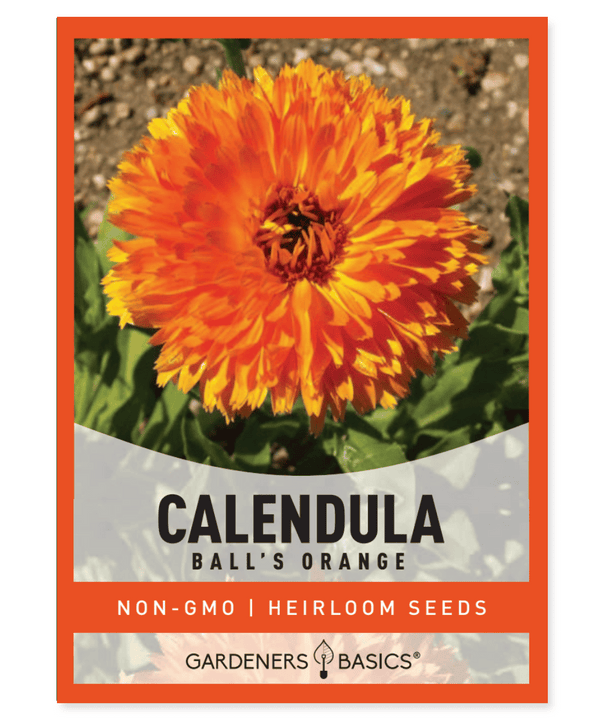
$2.49
Calendula Ball’s Orange Seeds: Vibrant Blooms for Your Garden Transform your garden with the radiant beauty of Calendula Ball’s Orange Flowers! These heirloom, non-GMO, non-hybrid, open-pollinated seeds produce striking, bright orange blooms that are perfect for flower beds, borders, and… read more
Fun FactLike a botanical clock, calendula flowers open and close with the sun. Talk about punctuality!
2. Choosing Your Calendula Seeds
When selecting your calendula seeds, consider checking out Gardeners Basics for various options. Once you've picked your seeds, it's time to sow calendula and transform your garden into an orange paradise.
3. Timing Is Everything: When to Sow Calendula Seeds
To grow calendula from seed, start sowing seeds indoors about 6-8 weeks before the last frost date. This gives your calendula seedlings enough time to grow and establish themselves before transplanting them outdoors.
4. Sowing Seeds Indoors: The Perfect Environment
To sow calendula seeds indoors, follow these simple steps:
- Choose a container: Select a container with good drainages, such as seed trays or peat pots. You don't want your seeds drowning in a pool of water.
- Prepare the soil: Fill the container with a well-draining potting mix. Calendula plants prefer well-drained soil to prevent root rot.
- Sow the seeds: Plant the calendula seeds about ¼-inch deep and 2 inches apart. They don't need to be buried too deep to germinate.
- Maintain the temperature: Keep the soil temperature between 65-75°F (18-24°C) for optimal germination. You can use a heating mat if necessary.
- Monitor the moisture: Ensure the soil remains consistently moist but not soggy. Calendula seeds typically germinate within 10-14 days.
Calendula Pacific Beauty Mix Seeds
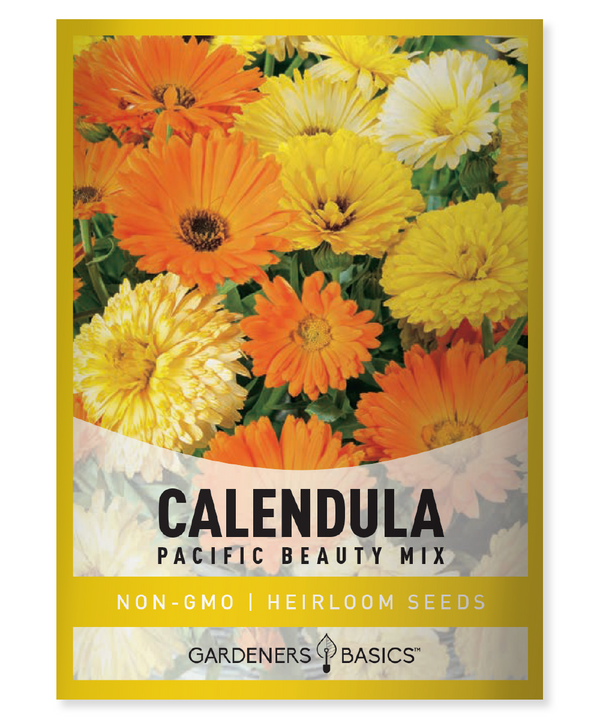
$2.49
Calendula Pacific Beauty Mix Seeds – Heirloom, Non-GMO, Non-Hybrid, Open-Pollinated Grow a stunning garden full of vibrant, cheerful blooms with our Calendula seeds. This heirloom flower variety features a dazzling array of warm hues, including yellow, orange, and apricot petals,… read more
5. Transplanting Calendula Seedlings
Once your calendula seedlings have developed 2-4 true leaves, it's time to move them outside. But first, let's get them acclimated to their new environment.
- Harden off the seedlings: Gradually expose your calendula seedlings to outdoor conditions over 7-10 days. Start with a couple of hours in a sheltered location and gradually increase the time spent outside.
- Choose the perfect spot: Calendula plants thrive in full sun to partial shade. They're not picky, but they do love soaking up some rays.
- Prepare the soil: Ensure your garden has good drainage, like indoor potting mixes. If your soil is heavy or clay-like, amend it with compost or organic matter to improve drainage.
- Plant the seedlings: Space your calendula plants about 12-18 inches apart for proper air circulation and growth. Dig a hole slightly larger than the root ball, place the seedling in the hole, and gently cover the roots with soil.
- Water and watch them grow: Water your transplanted calendula seedlings well to help them settle in. Continue watering them as needed to keep the soil moist but not waterlogged.
6. Direct Sowing Calendula Seeds OutdoorYouou can also sow calendula seeds directly in your garden after the last frost date. Just follow these steps:
- Choose your spot: Find a location with full sun to partial shade and well-drained soil.
- Prepare the soil: Loosen the dirt to a depth of about 6-8 inches and mix in some compost or organic matter to improve drainage and fertility.
- Sow the seeds: Plant calendula seeds about ¼-inch deep and 2 inches apart in rows or clusters.
- Thin the seedlings: Once the calendula seedlings have developed 2-4 true leaves, thin them to a final spacing of 12-18 inches apart.
7. Caring for Your Calendula Plants
Growing calendula plants is a breeze if you follow these simple tips:
- Watering: Water your calendula plants regularly to maintain consistent soil moisture, but avoid overwatering to prevent root rot.
- Fertilizing: Calendula plants aren't heavy feeders, but they appreciate a balanced, slow-release fertilizer or a side dressing of compost to keep them happy and healthy.
- Deadheading: Remove spent calendula flowers to encourage continuous blooming and prevent self-seeding. This will keep your garden looking fresh and vibrant throughout the season.
- Pest control: Calendula plants may attract aphids or whiteflies. Keep an eye out for these pests and use insecticidal soap or neem oil to control them if necessary.
8. Harvesting and Using Calendula Flowers
Harvest your calendula flowers once fully open, ideally in the morning after the dew has dried. You can use the fresh calendula petals in salads, teas, or skincare products. To dry calendula petals, spread them out in a single layer on a screen or tray in a well-ventilated area, away from direct sunlight. Once dried, store them in an airtight container for later use.
In Conclusion
Growing calendula from seed is a fun and rewarding experience. These stunning orange flowers will add color to your gardens and serve as an excellent companion plant, attracting pollinators and providing numerous health benefits. Follow this step-by-step guide, and soon you'll have a garden filled with thriving calendula plants that even the most seasoned gardener would be proud of. Happy planting!

Frequently Asked Questions - How to Sow Calendula Seeds
Q: Can calendula grow in containers?
A: Absolutely! Calendula plants adapt well to container gardening. Just choose a container with good drainage and enough space for the plant to grow. A container with a 12-inch diameter should be sufficient.
Q: What other plants make good companions for calendula?
A: Calendula can be an excellent companion plant for various vegetables and herbs, such as tomatoes, carrots, kale, and chamomile. Its ability to attract pollinators and deter pests makes it a valuable addition to your garden.
Q: Can I grow calendula indoors?
A: While growing calendula indoors is possible, they might not bloom as abundantly ad outdoors due to the limited light exposure. If you grow them inside, place them in a sunny spot near a south-facing window and ensure they receive at least 6 hours of sunlight daily.
Q: How long does it take for calendula to bloom?
A: From sowing, calendula plants typically take 45-60 days to bloom, depending on the variety and growing conditions. Once they begin flowering, they'll continue to bloom until the first frost, especially if you deadhead the spent flowers regularly.
Wildflower, Perennial, & Annual Flower Seed Kit | 35 Variety Pack
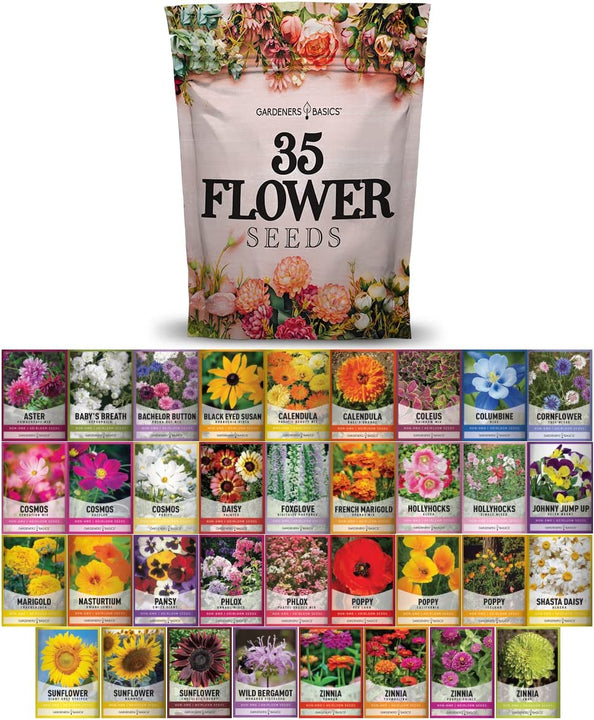
$29.95
$49.95
35 Flower Seeds Variety Pack – Heirloom, Non-Hybrid, Non-GMO, Open-Pollinated – Perfect for Pollinator-Friendly Gardens Transform your garden with our 35 Flower Seeds Variety Pack, offering a stunning and diverse selection of heirloom, non-hybrid, and non-GMO seeds. Each variety in… read more
Q: Are calendula flowers edible?
A: Yes, calendula petals are edible, slightly tangy, and peppery. You can use them in salads, teas, or garnish for various dishes. Additionally, calendula petals have numerous medicinal and skincare benefits.
Q: Can I save seeds from my calendula plants for next year?
A: Definitely! Calendula seeds are easy to save for the next growing season. After the flowers have dried, remove the seeds from the seed head and store them in a cool, dry place. Remember to label your roots with the variety name and the date you collected them to stay organized.
Q: Is calendula deer-resistant?
A: Calendula plants are considered deer-resistant, as deer typically avoid them due to their strong fragrance. However, it's important to note that deer-resistant does not mean deer-proof. Deer may still munch on your calendula plants if they are starving.
Q: Can calendula tolerate frost?
A: Calendula plants can tolerate light frost but may suffer damage or die back if exposed to a hard freeze; cover your calendula plants with a frost cloth or an inverted bucket during the coldest night to protect them from frosts.
Q: How do I use calendula flowers for skincare?
A: Calendula petals have soothing and anti-inflammatory properties, making them perfect for skincare products. You can infuse dried calendula petals in oil (such as olive or almond oil) and use the resulting calendula-infused oil as a base for homemade salves, lotions, or lip balms. Additionally, you can make calendula tea by steeping fresh or dried petals in hot water and using the cooled tea as a facial toner or rinse.
Q: Can calendula be used as a natural dye?
A: Yes, calendula petals can create natural dyes for fabrics, yarn, and other textiles. Thpaintye produces shades of yellow, orange, and gold, depending on the calendula variety and the mordant used. To make a calendula dye, simmer the petals in water for an hour or two, strain the liquid, and use it as a dye bath for your desired materials.



